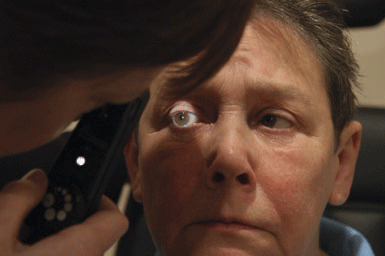 Scotland's new Health Bill has now been approved by the Scottish Parliament. Its passing confirms that all patients in Scotland will be eligible for free eye tests from 2007.
Scotland's new Health Bill has now been approved by the Scottish Parliament. Its passing confirms that all patients in Scotland will be eligible for free eye tests from 2007.
The news arrived as it was revealed that thousands more people in Scotland with diabetes are attending NHS eye examinations, new statistics have revealed.
Ophthalmic figures from the Scottish health statistics unit, ISD, show that in the 12 months to March 31 there was an increase of 5,798 sight tests for those with diabetes over the previous year. This accounted for a 38 per cent overall increase (15,154) in sight tests.
In total, 934,960 sight tests were paid for by NHS Boards for the 12 months to the end of March. This represented a 1.6 per cent increase on the total for the year ending March 31 2004, when 919,806 were performed.
The statistics also show that 457,328 vouchers were reimbursed by NHS Boards north of the border in the year to March 31. And the number of supplementary tints supplied - 11,839 - decreased by 7 per cent on the previous year.
The Health Bill will deliver a range of measures which will improve health and access to healthcare, the Scottish Executive has said.
The Smoking, Health and Social Care (Scotland) Bill lays the foundations for the provision of free eye and dental checks for all, a wider range of pharmacy services and better access to dental services with greater powers for NHS Boards to provide the services local communities need.
Health Minister Andy Kerr said: 'By 2007 everyone in Scotland will be able to get their eyes and teeth checked for free, while the over-60s will receive free dental checks a year sooner than that.
'We are also giving NHS Boards the power to form joint-venture companies with public and private sector partners to improve and create new community facilities, to support the provision of a wide range of primary and community care services.'
Register now to continue reading
Thank you for visiting Optician Online. Register now to access up to 10 news and opinion articles a month.
Register
Already have an account? Sign in here
